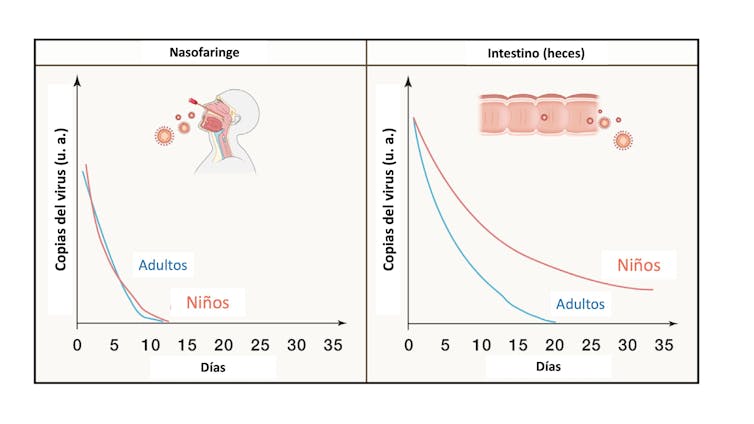New childhood hepatitis may be related to covid-19
- May 19, 2022
- 0
Photo: Pixabay In a typical year, very few children need a liver transplant, often because they previously had a disease that lowered their immunity. For example, around 120
Photo: Pixabay In a typical year, very few children need a liver transplant, often because they previously had a disease that lowered their immunity. For example, around 120


In a typical year, very few children need a liver transplant, often because they previously had a disease that lowered their immunity. For example, around 120 child transplants, including all organs, are performed each year in Spain. And each case is a minor tragedy for the families involved.
So when the numbers go out of the norm, the issue is serious. This is why alarm has been raised in the medical community at the sudden and bizarre outbreak of childhood hepatitis of unknown origin, which began in the United Kingdom and continued through Israel and the United States, with 450 cases now known. .
Of these, 14% required liver transplants in the US and 10% in the UK. So far, 232 cases have been recorded in Europe, including Spain, with 26 cases.
Hepatitis is inflammation of the liver, usually caused by a virus. If not treated in a timely manner, liver transplantation may be necessary. This type of surgery in children includes lifelong immunosuppressant drugs. This is not unimportant: we all know from the covid pandemic that this predisposes the individual to suffer from infectious diseases of particular severity. Another issue that complicates the issue is that the liver to be transplanted must be from another child, not an adult, in order for it to function properly in the long run.
When faced with a new epidemic, it is essential to determine the cause as it stipulates the treatment to be applied. Let’s not forget that early treatment can prevent liver transplant.
From the first moment, different hypotheses were used:
Given the difficulty of finding a simple explanation, the combination of several factors, such as the combination of two viruses, is analysed. Since SARS-CoV-2 is a novel virus that also produces multi-organ sequelae in all types of patients, including children, its involvement has always remained a possibility. And now a new hypothesis has emerged that could definitively connect them.
Posted a few days ago Lancet An article that started a daring hypothesis that could explain the hepatitis phenomenon. The first thing to keep in mind is that many of the children affected by this new hepatitis have recently become covid (for example, it happened in 11 of 12 cases in Israel).
It should also be understood that the disease caused by SARS-CoV-2 in children progresses differently compared to adults. For example, traces of viruses in children are detected in the intestine much longer than in adults (Figure 1). The good thing about these differences is that the disease in children is usually much milder; bad, sometimes complicated by a multi-organ inflammatory process called MIS-C.
This syndrome occurs in a small percentage of children, even if it is mild, some time (from a few weeks to a few months) after the child has had the illness. And it is usually serious enough to require hospitalization.
The liver is one of the most frequently affected organs. In fact, 43% of MIS-C cases result in hepatitis. The cause is thought to be disruption of the intestinal barrier such that traces of the virus entering the bloodstream cause inflammation.

Well, the other piece that adds to the puzzle is the presence of a similar sequence in the Spike protein of SARS-CoV-2 that is seen in a toxin from the Staphylococcus aureus bacteria called enterotoxin B. This corresponds to the series. It’s part of a protein called a “superantigen,” which triggers a very rapid and powerful inflammatory reaction that the immune system perceives as a high danger signal. A mutation that recently emerged in Europe is thought to increase the similarity.
To add fuel to the fire, it is known that an adenovirus infection in mice can induce hypersensitivity to enterotoxin B. With this, we would already have all the pieces of the puzzle. It will be a combination of two conditions:
Currently, this hypothesis is just a hypothesis. It’s pretty convoluted, and it won’t be trivial to show that it’s true. But if proven, children can be treated early with steroids so liver damage can be prevented and transplantation can be avoided. This therapy has already been shown to be effective in some cases in Israel and another case in a 3-year-old girl in Cincinnatti (USA).
Conversely, if it is confirmed that damage to the liver is caused directly by a virus, it will be necessary to continue improving antiviral treatments.
The lesson we can draw from all this is that in such a complex situation one should keep an open mind to all possible explanations. And this, unfortunately, is not always the simplest one.![]()
Matilde Cañelles López, Scientific Researcher. Science Technology and Society, Institute of Philosophy (IFS-CSIC)
This article was originally published on The Conversation. Read the original.
Source: El Nacional
Alice Smith is a seasoned journalist and writer for Div Bracket. She has a keen sense of what’s important and is always on top of the latest trends. Alice provides in-depth coverage of the most talked-about news stories, delivering insightful and thought-provoking articles that keep her readers informed and engaged.